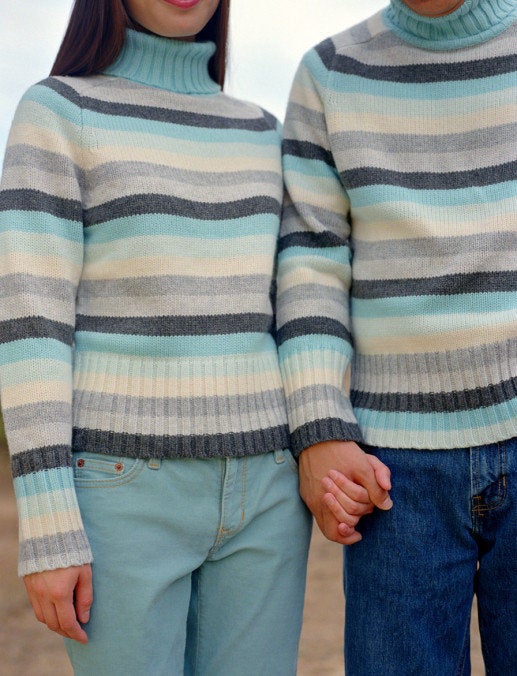
There are some human experiences that we fancy as too ethereal to study, like falling in love.
But when you think about it, poets, playwrights, musicians, philosophers and others have been ruminating for centuries on the psychological experience of attraction. So it really shouldn't come as a surprise that in the past several decades behavioral scientists have joined the mix. And some of what science has to tell us is at odds with our intuitions about love and attraction.
Consider the role of similarity. As the old saying goes, birds of a feather flock together. But we're also quite fond of the notion that opposites attract. So which one is it?
According to the data, more often than not, similarity rules the day. Sure, you have your sporadic James Carville-Mary Matalin pairings with a huge divergence in political ideology. And all of us know a couple in which the two individuals come from very different backgrounds, are of very different ages, or have very different interpersonal styles. Shoot, my marriage consists of a Yankees fan and a Red Sox fan, which in New England qualifies as an interfaith household.
But for the most part, we spend time among similar others and are drawn to people who are like us. Hardly an earthshattering conclusion (or topic for a blog post), right? Perhaps. But what is surprising is just how far-reaching these effects of similarity can be.
In fact, as I sat reading over lunch this month's issue of Personality and Social Psychology Bulletin -- I know, I know, it's a glamorous life -- within a 10-minute span I came across two separate demonstrations of how powerful similarity can be. Even when we don't realize it. And even when we simply think about similarity in superficial, physical terms.
The first paper, authored by researchers at Wilfrid Laurier University in Canada, examined how physical similarity predicts seating choices. It's a question that you sometimes hear asked with regard to race, as in "Why are all the Black kids sitting together in the cafeteria?". Never mind that the white kids do, too, but we don't seem nearly as concerned about it. It turns out that we gravitate toward similar others even on dimensions much less central to our identity than, say, ethnicity.
For example, in their first study, the Canadian researchers analyzed the seating arrangement of college students in a library computer lab. They made these observations several different times over the course of several different days. What they found is that students with glasses were significantly more likely to sit next to other students with glasses than random chance alone would predict. And students without glasses were more likely to sit with their spectacle-deprived brethren.
A second study found the same pattern by hair color. And in a third study, participants arrived to a psychology lab and were introduced to a partner who was already seated. Handed a chair, they were told to have a seat next to this partner, after which the research term surreptitiously measured how close to the partner's chair they put their own. A separate set of researchers then evaluated photographs of both the participant and the partner. Lo and behold, the more physically similar the two were judged to be, the closer to the partner the participants tended to place their chair.
Now sitting near someone is an indicator of attraction, sure, but it hardly qualifies as falling in love, as I suggested at the start of this post. But just a few minutes later, I came across another paper that addressed attraction of a more romantic and sexual nature by using activity logs from an online dating site.
This paper, authored by researchers at Berkeley, examined the "matching hypothesis," or the notion that we tend to select dating partners of similar desirability level to our own. Or, put more simply, the idea that we try to date people in our own league.
To test this, the researchers measured the popularity of over 3,000 heterosexual users of the dating site. They defined popularity as the number of opposite-sex individuals who had sent unsolicited messages to a user. Because this measure didn't include 1) messages sent in response to contact initiated by the user, or 2) subsequent messages sent during an ongoing exchange, there was no way for individuals to increase their own popularity count. Well, other than appearing more enticing in their original profile page, that is.
Analyses indicated that high-popularity users contacted other popular users at a rate greater than would be expected by chance. No real surprise, right? After all, who wouldn't want to reach out to the popular potential mates?
The less popular users of the site, that's who. Because users lower in popularity contacted other low-popularity users more often. A follow up study with over one million users produced a comparable result: people tend to select and be selected by others with similar levels of popularity. It would seem that when it comes to dating, most of the time we do indeed try to stick to "our own league."
So don't let anyone convince you that certain aspects of our human existence defy scientific study. Give me just one quick lunch break and I can provide them with evidence to the contrary. Or, as with so many other aspects of human nature, they can just find the right episode of "Seinfeld" to watch:
Sam Sommers is a social psychologist at Tufts University in Medford, MA. His first book, Situations Matter, will be published by Riverhead Books (Penguin) in December 2011. You can follow him on Facebook here and on Twitter here.